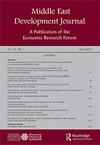Natural resources, incentives and human capital: reinterpreting the curse*
IF 0.9
Q4 DEVELOPMENT STUDIES
引用次数: 13
Abstract
ABSTRACT We show that natural resource rents when distributed as lump-sum transfers to individuals distort the incentive to invest in tertiary education. Developing an overlapping generations model for the case of natural resource rents we show that if transfers from natural resource wealth occur when a country's technology level is marginal, the chance that the country will be caught in a low-level equilibrium trap is high. Using data for 46 countries for which data are available over time, we find strong empirical support for the model in both dynamic panel estimates and cross-sectional estimates.自然资源、激励与人力资本:重新解读诅咒*
摘要本文表明,当自然资源租金以一次性转移的形式分配给个人时,会扭曲对高等教育投资的激励。通过建立自然资源租金的代际重叠模型,我们发现,如果自然资源财富的转移发生在一个国家的技术水平处于边际水平时,那么这个国家陷入低水平均衡陷阱的可能性就很高。利用46个国家的数据,我们发现动态面板估计和横截面估计都有力地支持了该模型。
本文章由计算机程序翻译,如有差异,请以英文原文为准。
求助全文
约1分钟内获得全文
求助全文

 求助内容:
求助内容: 应助结果提醒方式:
应助结果提醒方式:


